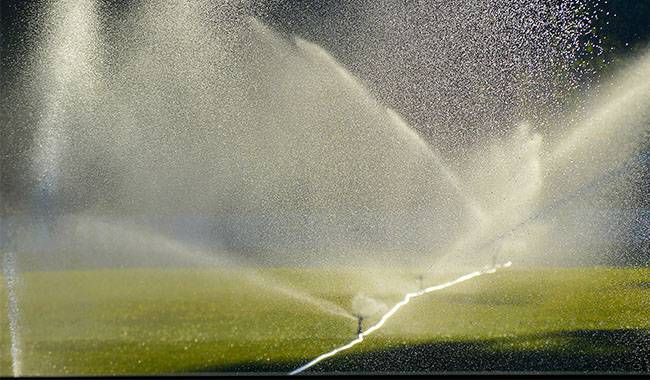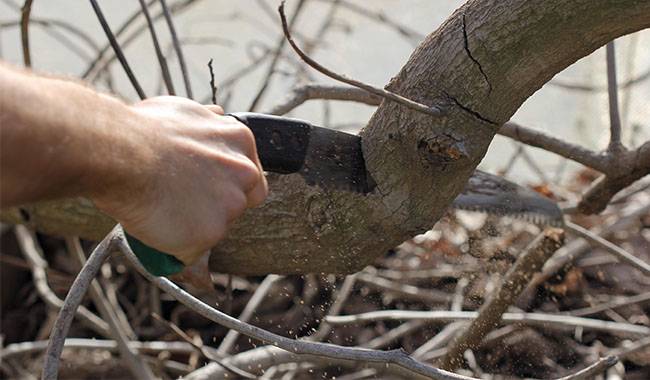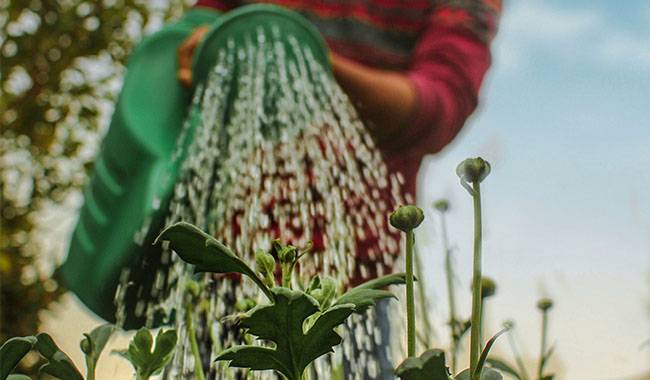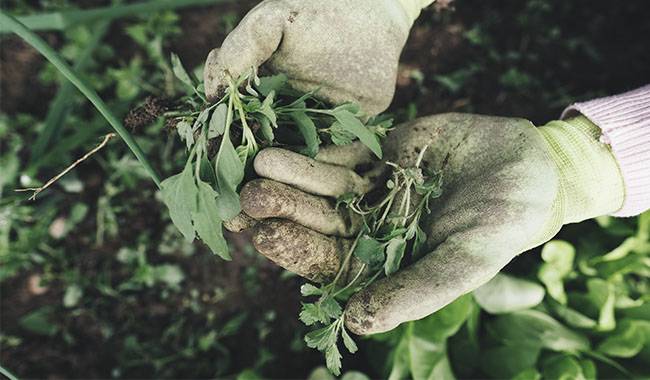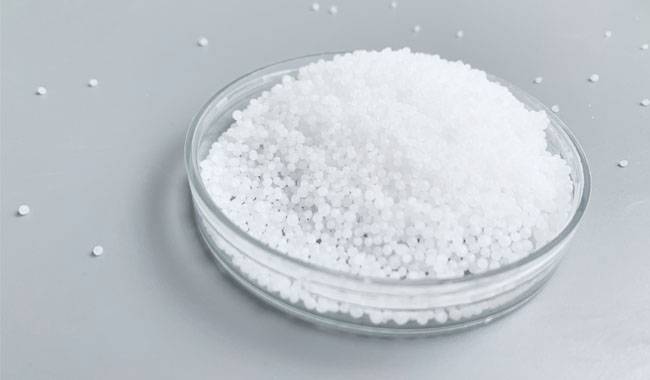
Urea, or carbamide, belongs to the category of nitrogen fertilizers. Urea is also used as a fertilizer by large farms and gardeners as well as gardeners who own several hectares of land. The reason why urea is so popular is simple, it is quite effective and cheap.
DESCRIPTION OF UREA
Urea is a substance with the chemical formula (NH2)2CO. urea is quite soluble in sulfur dioxide, liquid ammonia, and water. Urea is synthesized from ammonia and carbon dioxide at about 302°F (150°C) above zero. In addition to being used as a fertilizer, urea is also used in the food industry, usually as No. 798. Urea (WHO Food Additives Series 32), the most common such additive used in various chewing gums.
Urea contains almost half of the nitrogen (about 44%). Plants need nitrogen mainly for proper growth and development. In the case of urea, it is important to know that plants can only use half of the nitrogen contained in this fertilizer. However, despite this, it is best not to increase the amount of urea due to the nitrification process.
If the nitrogen content of the soil is very low, it is better to combine urea with magnesium sulfate to increase its content, then nitrification will not occur to the same extent as with large doses of urea.
Urea is usually available in two grades – grade A and grade B. Typically, Grade A urea is used in industry, but Grade B is only used as a fertilizer. Externally, it is a whitish pellet with visible traces of yellowing. In the last few years, tablets containing urea started to be produced, but it is still difficult to find them on the market.
The tablets are good because they have a special coating that prevents the evaporation of nitrogen before it enters the soil during the surface application of fertilizer. With this in mind, pellets require much less weight than granules, but the urea in pellets costs more, so the economic effect is almost imperceptible.
ADVANTAGES AND DISADVANTAGES OF UREA
Undoubtedly, the advantages of urea are accelerated plant growth, the increased protein content of cereal crops, enhanced plant immunity, pest prevention, ease of use, including complete dissolution without residues.
Disadvantages of urea: in most cases, excess fertilizers cause severe plant burns and may lead to death, urea does not combine with some fertilizers (wood ash, calcium nitrate, simple calcium superphosphate, lime, chalk, gypsum, and dolomite powder).
Urea can be applied quickly with phosphate powders and ammonium sulfate (these combinations are not suitable for storage) or with sodium nitrate, potassium nitrate, ammonium nitrate, potassium chloride, potassium sulfate, and manure – these combinations can be stored for long periods of time.
Why can’t urea be used in combination with a range of fertilizers? In fact, this fertilizer is so acidic that if you combine urea with lime, wood ash, chalk, or dolomite powder, a simple neutralization reaction will occur while releasing a large amount of salt into the soil.
If you mix urea with monophosphate or calcium nitrate, the soil will not be salty and will be acidic because all these fertilizers are acid-based.
HOW DO I USE UREA AS A FERTILIZER?
In the vast majority of cases, nitrogen, and therefore nitrogen fertilizer, is needed by plants in the spring, at that time when active sap movement and vegetation begins. Applying urea in the fall will activate the growth process and the plants will simply freeze or frostbite in the winter.
However, if the plot is empty and you plan to plant in the fall, you can fertilize the soil with urea in the fall, but you should keep in mind that about 40-45% of the nitrogen contained in urea will break down and evaporate fairly quickly when you apply it to the soil in the fall.
When applying urea in the spring, it is best to use a water-soluble fertilizer rather than a dry fertilizer to reduce the risk of plant scorch. Remember that even water-soluble urea is best applied in pre-moistened soil or after heavy rains.
Dry urea is best applied to the area where it is intended to be planted and should not simply be spread on the surface but must be buried in the soil by digging or tilling. Also, a minimum amount of time should elapse between spreading urea on the soil surface and digging or tilling the soil, otherwise, most of the nitrogen will simply evaporate or turn into ammonia. The overall decomposition time for urea is quite short – usually no more than five days.
Gardeners and farmers make a serious mistake by allowing urea pellets in their gardens and vegetable gardens in the spring directly onto the still thawing snow, or by making urea when it rains (also by spreading it on the soil surface). In this case, most of the nitrogen contained in the urea will evaporate or be washed into deeper, inaccessible soil layers.
The best application protocol for fruit trees and berry shrubs is to apply urea in the form of dissolved water in pre-cut holes or trenches at a depth of 1-1.5inch (3-4cm) in the bite zone or shade zone – strong plants can reach 4inch (10cm) underneath. Both the pit and trench should be buried immediately after application. This application prevents evaporation of the nitrogen contained in the urea and prevents it from leaching into deeper soil layers.
It makes the most sense to use urea as a fertilizer during the growing season if the plant shows obvious signs of nitrogen deficiency, i.e., very slow development, a sunken appearance, atypically small leaves, and extensive fragmentation of the ovaries. The first signs of nitrogen deficiency are yellowing or lightening of the leaves, but it is possible to make a mistake here because plants respond equally to water deficiency and iron deficiency in the soil.
To distinguish iron deficiency from water deficiency and nitrogen deficiency, you must look closely at the leaves of your plants during the day: if there is really very little nitrogen, you will not notice the leaves discoloring during the day; but if you have a lack of water or iron in the soil, the leaves will discolor. Also, if there is a lack of iron, the young leaves will turn yellow first, before the older leaves turn noticeably yellow, but if there is a lack of nitrogen in the soil, first the older leaves will turn yellow, then the young leaves.
At the peak of the growing season, when there is a lack of nitrogen in the soil, urea can be applied as a dry or liquid, and you can use it to treat plants for foliar spraying.
HOW TO PREPARE LIQUID UREA FERTILIZER?
Liquid fertilizers made from urea are fairly easy to prepare because of their good solubility in water (even without precipitation). It is most often done in a solution containing 0.5% urea or 1%. This means dissolving 50 and 100 g of urea in a bucket of water, or 5 and 10 g of urea in a liter of water, respectively.
UREA APPLICATION RATE
Urea is considered a general-purpose nitrogen fertilizer that is suitable for both vegetable crops and berry, fruit, and flower crops, and can be used on any type of soil.
If you apply urea according to the instructions, the dosage is as follows. In granular form, i.e. in dry form, about 5-10 g of fertilizer should be applied per square meter of soil, buried in pre-wetted soil 1.2-2.7inch (3-7 cm) – up to 4inch (10 cm), depending on the size of the plants; under vegetable and fruit or berry crops, 20 g of water-soluble fertilizer should be applied per square meter of soil.
Treatment with urea dissolved in water, i.e. foliar spraying – here the dosage under vegetable crops is as follows – 5 grams per square meter per bucket of water, under shrubs and trees – 10 grams per bucket of water, also 10 grams per square meter; when planting plants do 4-5 grams of fertilizer in the soil of the planting hole, but be careful to mix it with the soil and avoid contact of the roots with urea.
THE USE OF UREA FOR DIFFERENT CROPS
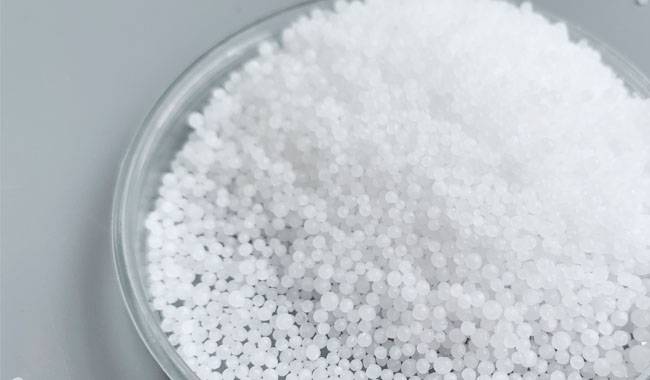
Garlic
Both winter and spring garlic can be fertilized with urea in early June. Do not use urea under garlic later; it may cause a build-up of green masses, which is detrimental to the bulbs. Urea should be added to garlic dissolved in water with potassium chloride – 10 grams of urea and 10 grams of potassium chloride per bucket of water, which is the standard per square meter of garlic bed.
Cucumber
It is appropriate to fertilize cucumbers with urea only two weeks after planting the seedlings on the plot. Urea is dissolved in water at a rate of 15 grams per square meter of area per bucket of water. Allow 45-50 grams of calcium superphosphate to be added to the solution. The fertilizer will be most effective if the soil is well moistened before application.
In greenhouses, cucumbers can be treated with urea, i.e. foliar spraying, especially if the color of the leaf discs (discoloration) changes.
In order to make a full foliar spray on cucumbers in the greenhouse, 15 grams of urea, 20 grams of calcium superphosphate, and 15 grams of potassium chloride must be dissolved in a bucket of water. Cucumbers should be treated on cloudy days and after watering.
Tomatoes
Tomatoes prefer to be treated with urea. Usually, tomatoes are fertilized with urea when planting seedlings on plots, using a mixture of 12-14 g urea and calcium superphosphate (6-7 g of each fertilizer) per hole.
Cabbage
Urea is usually used on cabbage at the first feeding. Water cabbage heavily before fertilizing, then dissolve 30 grams of urea in a bucket of water and use this solution per square meter of soil.
Potatoes
Potatoes are poor absorbers of mineral fertilizers and should be fertilized with urea before planting tubers. As a rule, fertilize a few weeks before planting, preferably with a potash fertilizer. For an area of half a square meter, you need about 1.5 kg of urea and 0.5 kg of potash.
If for some reason you do not fertilize with urea before planting, you can add it to the soil 5 days after the tubers are planted, not in the form of a dry solution, but in the form of water dissolved. With a rate of about 15-16 grams per bucket of water, this solution is enough for 20 plants (about 0.5 liters per plant).
Garden strawberries
In this culture, it is recommended to use urea only when necessary, because if the strawberries in the garden feel nitrogen deficiency, the berries will be small in size and number and will have an average taste. And in case of excess nitrogen, the berries will be watery and tasteless.
It is recommended to apply urea in the strawberry garden immediately after the snow thaw at the rate of 15-20 grams of the dissolved form of fertilizer per square meter, but not more. If a higher dose of nitrogen fertilizer is needed, it is better to use nitroprusside or dichlorvos.
Fruit trees and large shrubs
Fruit trees and large shrubs respond quite well to urea fertilization. You can apply urea to such plants up to three times in a season. Usually apply fertilizer immediately after the snow thaws, during flowering, and when the crop matures. Before applying urea, loosen the soil in the occluded or root zone, water it, and then apply the urea so that the fertilizer is buried 1-1.5inch (3-4 cm) in the loosened soil. After application, it is best to cover the urea with soil.
The rate of fertilizer varies depending on the age of the plants: thus, before trees and large shrubs reach the fruiting stage, they have almost a third less. For example, about 75-80 g of fertilizer is needed under apple trees that have not yet reached fruiting, 85-90 g under cherry trees, 110-115 g under plum trees, and 100-110 g in bushes (iris, hanging orchids, etc.). After entering the fruiting season, 150-160 g per apple tree, 110-120 g for cherry trees, 125-140 g for plum trees, and 135-145 g per bush (e.g. hanging orchids and similar plants) are needed.
Flowers
Flowers should be fertilized with urea at the beginning of active growth to increase the amount of asexual reproduction. Further such fertilization is inappropriate, as it is not good for flowering and will continue to form asexual reproduction, as the florist says, “the flowers will turn into leaves”. It is worth noting that in the case of excess nitrogen, flowers may not form buds at all, and in the case of excess nitrogen, there will be a mass shedding of buds and inflorescences, both flowering and non-flowering flowers.
Urea should only be applied to flower crops dissolved in water, so about four grams of the fertilizer can be dissolved in one liter of water and used under large flowers such as peonies, or split in two if the flowers are smaller, such as tulips or bellflowers.
USE UREA FOR PEST CONTROL
Urea is often used against pests if it is not possible or if you do not want to use chemicals. Use it to treat plants, usually with heavy watering before germination when the air temperature rises above 41°F (5°C). With the help of urea treatment, you can get rid of weevils, aphids, codling moths, and weevils.
To do this, use 30 grams of urea dissolved in water per bucket of water. If you had a bad infestation last season, you can increase the dose to 100 grams per bucket of water, but not more than that, as it may harm your plants.
UREA STORAGE INSTRUCTIONS
Considering the high hygroscopic nature of urea, it should be stored in a dry and ventilated space with a humidity of 50% or less. Urea can be stored in a more humid area but in a properly sealed container.
Typically, the guaranteed shelf life is only six months, but the life of urea is unlimited. The fact that the manufacturer guarantees that there will be no urea clumping for six months and then in the case of clumping it must be crushed before use, can be used indefinitely.
However, one must take into account the fact that the nitrogen content of urea may decrease slightly over time and that this fact must be taken into account when using a fertilizer with a long storage period.
That’s all the information we wanted to tell you about urea, which seemed adequate to us, but if you have any questions, we will be happy to answer them in the comments.




